On our second and last day in Shiraz, we arranged to go on a day trip with Australian Qail and Spanish Itziar to four extremely interesting cultural sights: the ancient Achaemenid capital of Pasargadae, the ancient necropolis of Naqsh-e Rustam, the ancient rock carvings of Naqsh-e Rajab and the famous site of Persepolis, an ancient ceremonial capital of the Achaemenid Empire.
We hired a taxi to drive us around for the day, and left early in the morning to go to Pasargadae, which was furthest away.
Pasargadae, the first Achaemenid capital
Pasargadae was founded by Cyrus II the Great in the middle of the 6th century BC, and was the first dynastic capital of the Achaemenid Empire (550–330 BC), which is also called the First Persian Empire. In 530 or 529 BC, Cyrus II the Great died in a battle, and the site of Pasargadae was left unfinished. The site was inscribed on the UNESCO World Heritage Sites list in 2004.
Pasargadae is a huge site of 1,6 square kilometres, so we were driven to all the different ruins, which includes the tomb of Cyrus II the Great, the fortress of Tall-e Takht and two royal palaces. The view from the site was beautiful, especially at the fortress of Tall-e Takht, where the skeletons of Cyrus’ son and successor Cambyses II were found. Our driver had bought tea and biscuits for us, which we enjoyed at the fortress.
Shortly before we left Pasargadae, I heard two girls speaking Danish, and I just had to talk to them. They told me that they were on a two-week field trip to Iran with 128 other students from the architecture school in Copenhagen! It was weird enough to meet two Danes, let alone 130 of them!
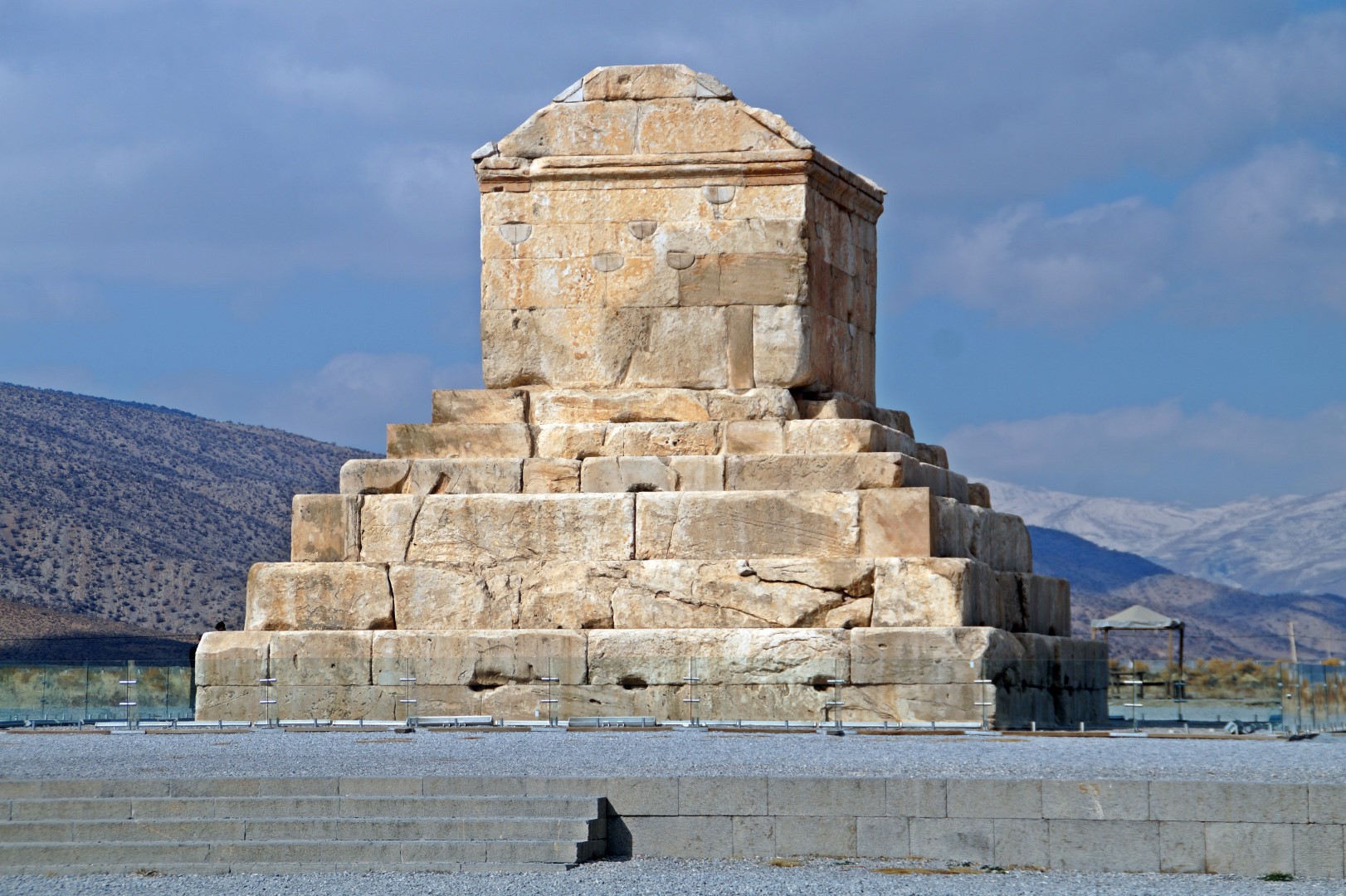
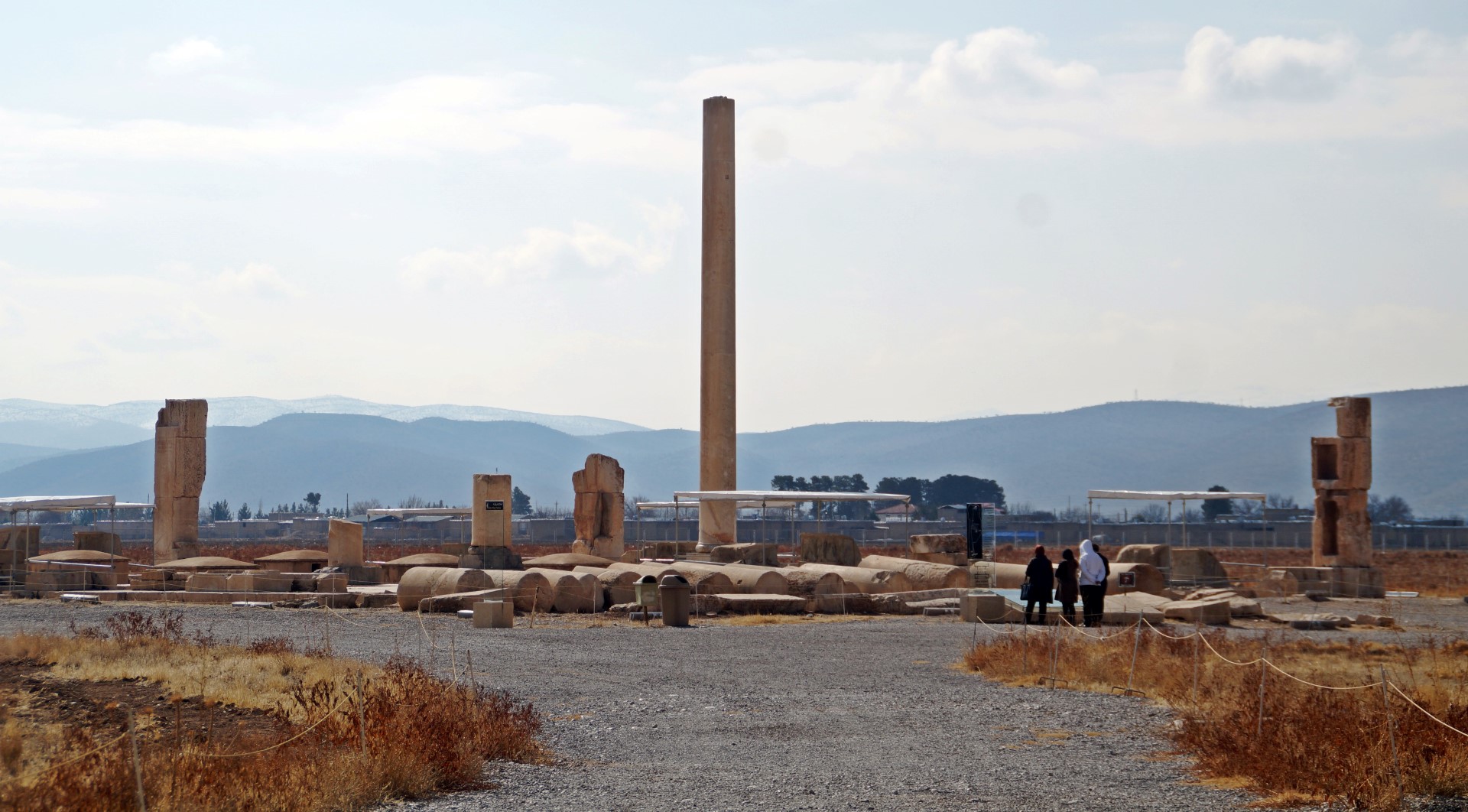

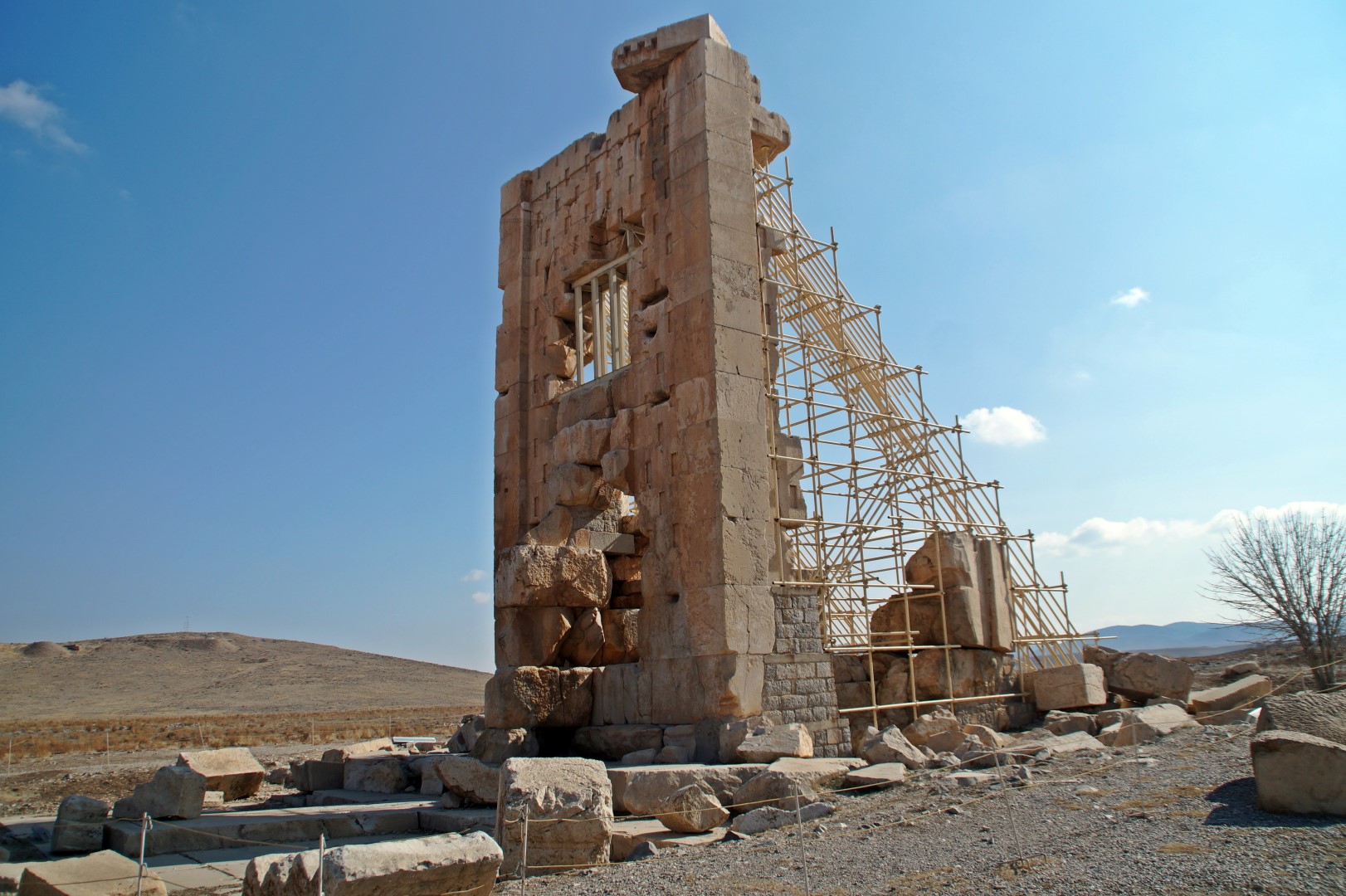
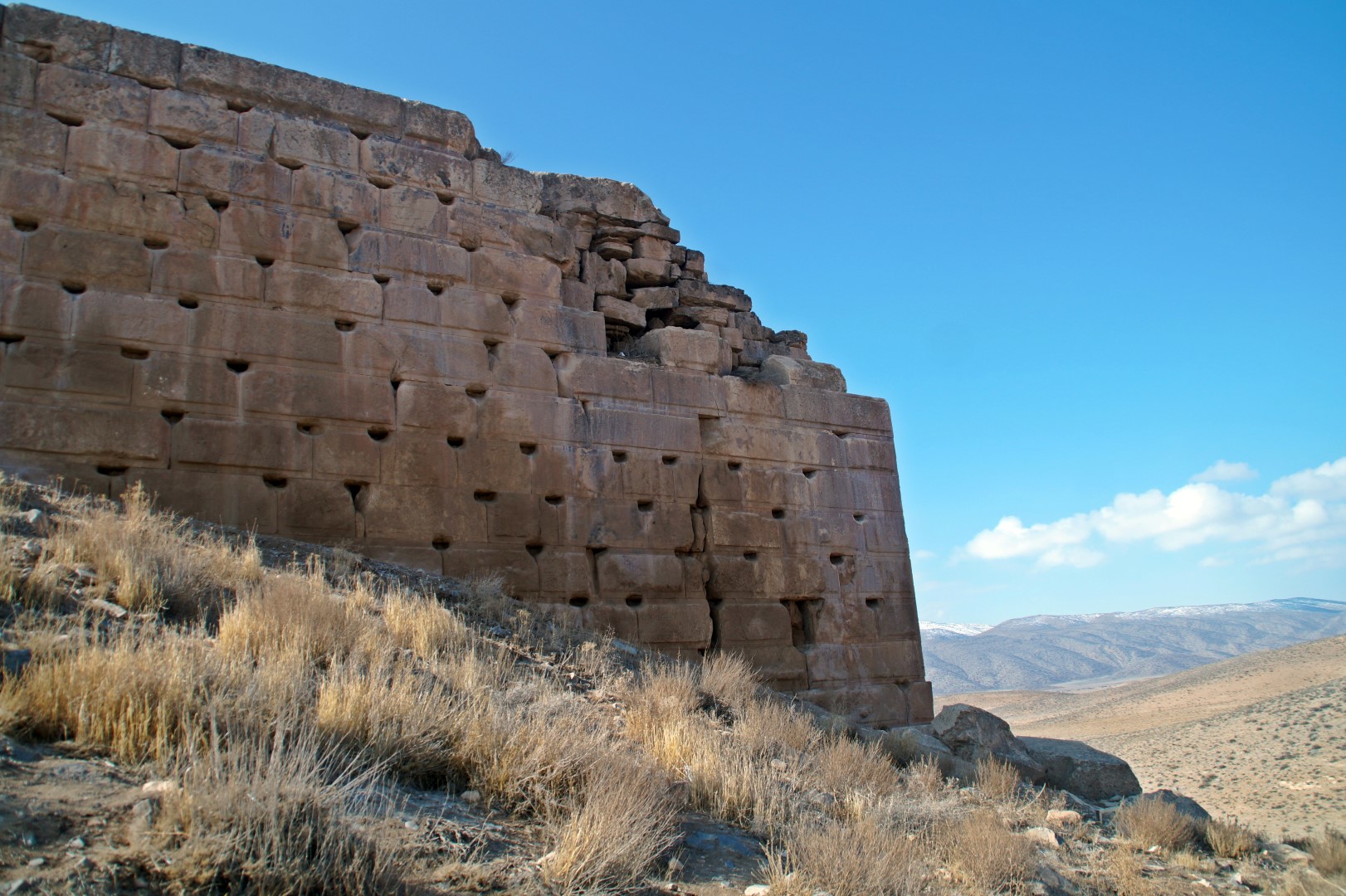
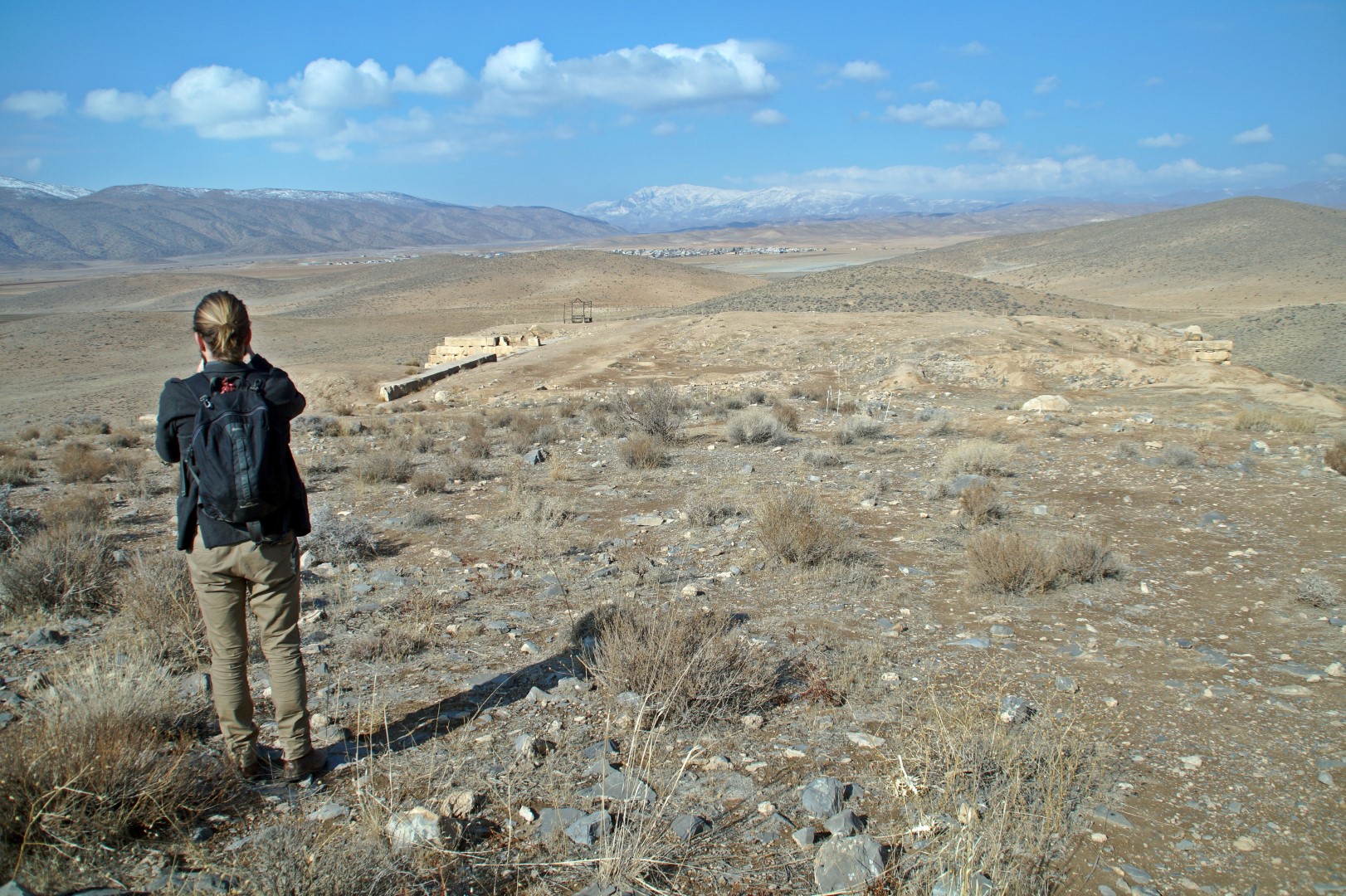
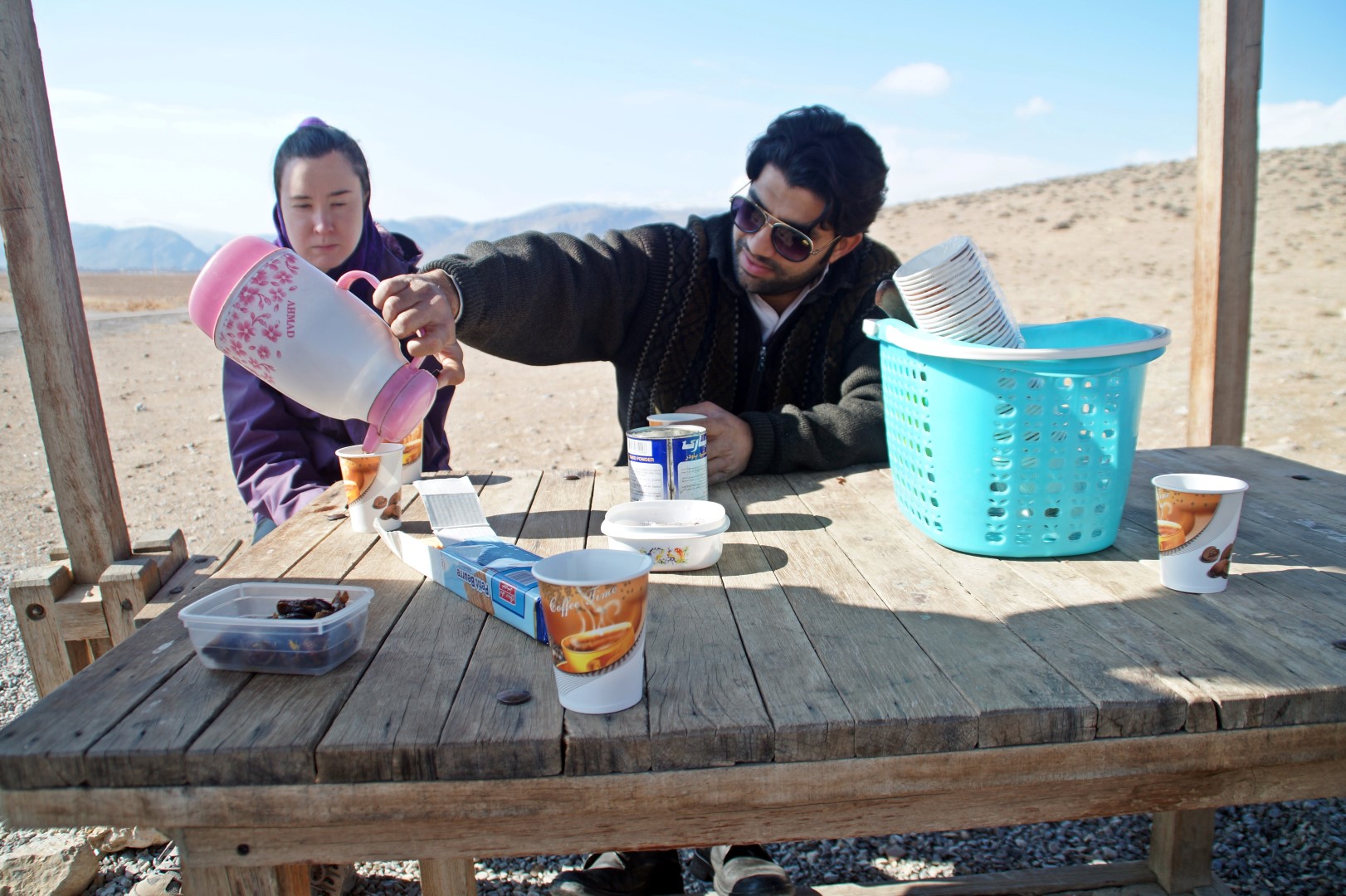
The Necropolis of Naqsh-e Rustam
Next up was Naqsh-e Rustam, an ancient necropolis, which features a group of rock reliefs cut into a cliff from the Achaemenid period, the Sassanid period (224 to 651 AD) and one rock relief from the Pre-Iranian civilization of Elam, which dates back to 1000 BC and is the oldest rock relief on the site.
The entrance fee for Naqsh-e Rustam was the same as Pasargadae and Persepolis, but had a lot less to offer, so Steve, Itziar and I decided not to go in, while Qail went in for a quick look. We were able to take pictures of the rock reliefs from the entrance, although I’m sure it would’ve been interesting to see them up close. Instead, I spent the waiting time buying beautiful local handpainted metal plates.
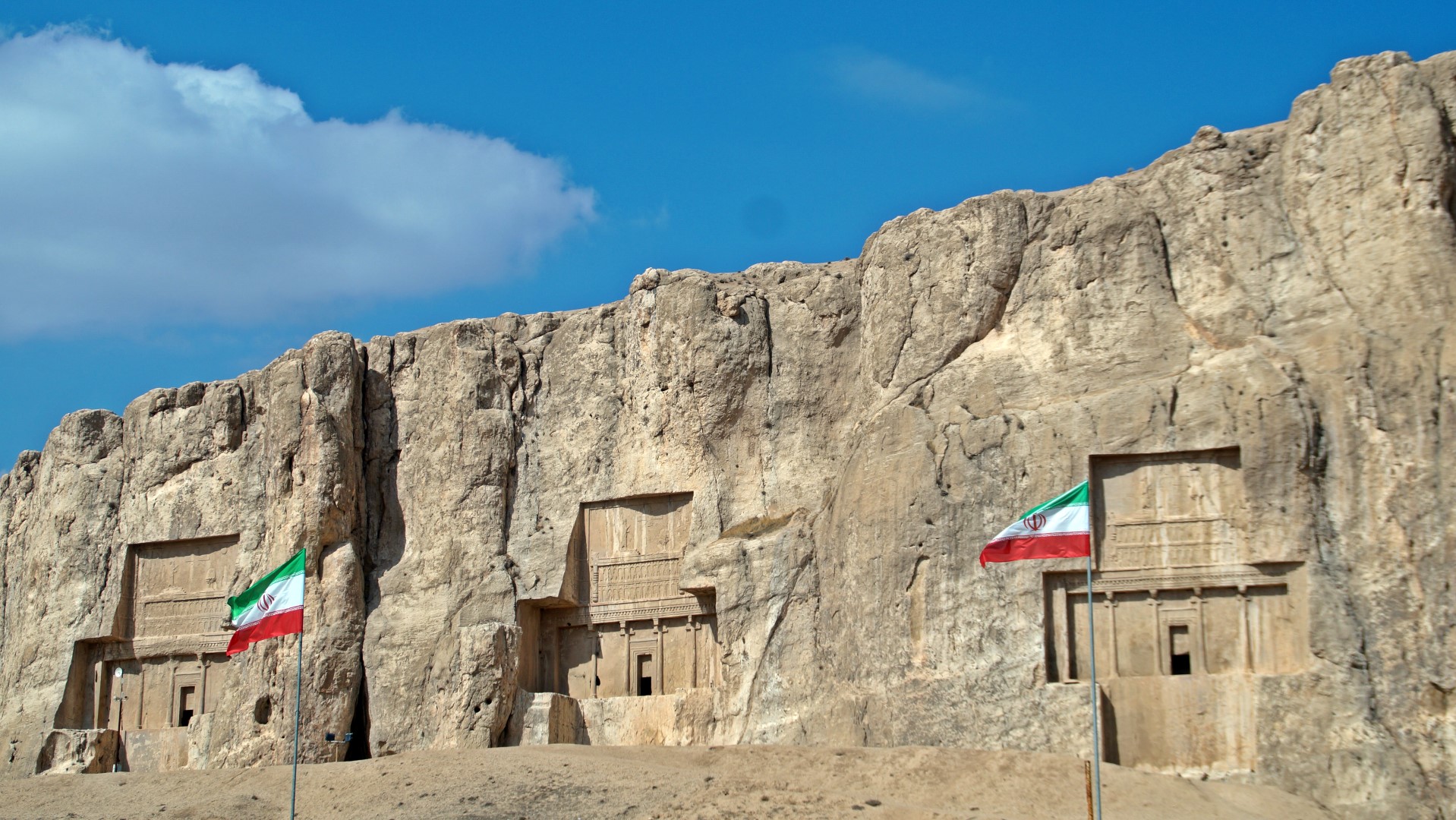
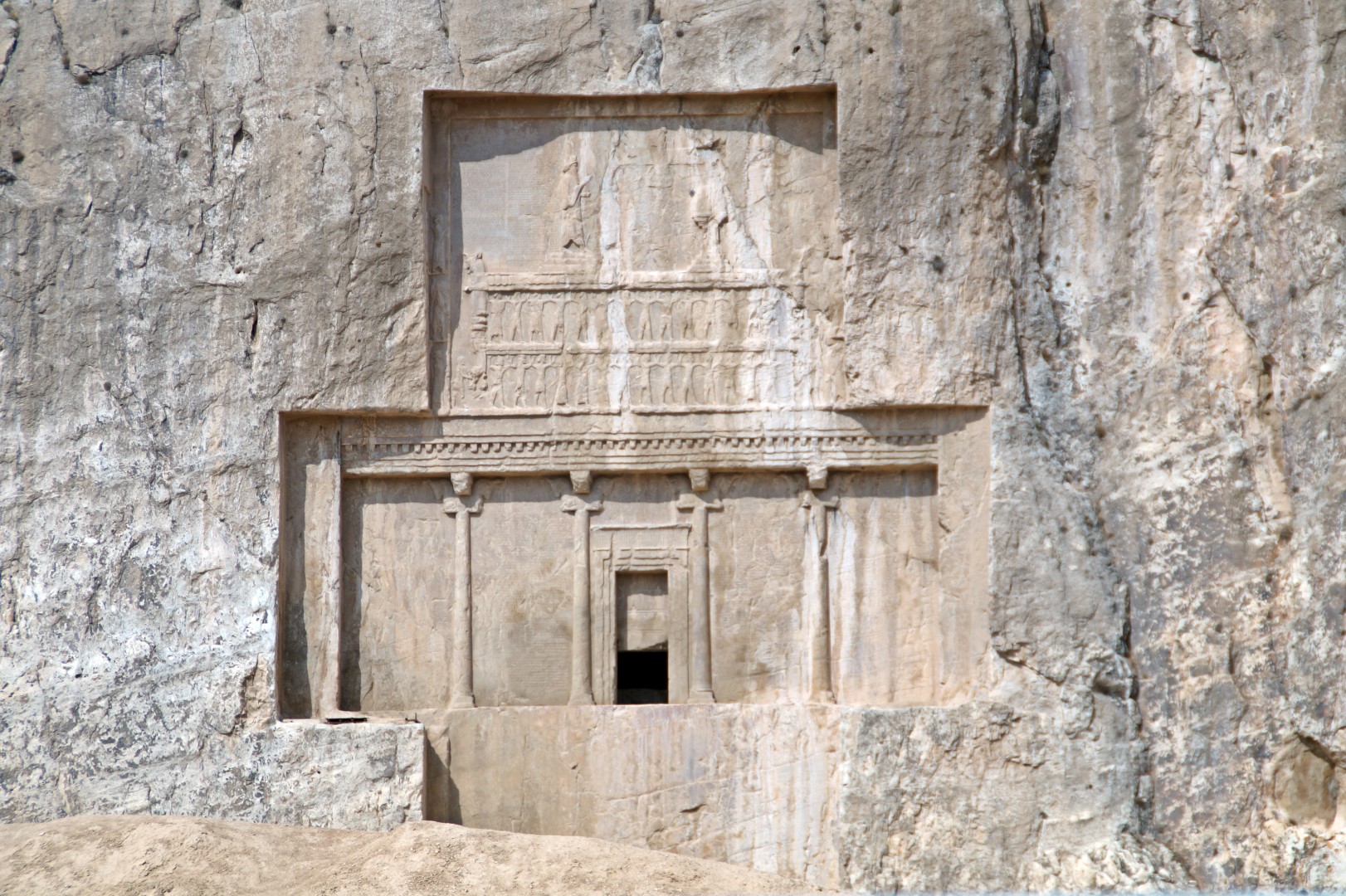
The rock reliefs at Naqsh-e Rajab
The next stop was the rock carving site of Naqsh-e Rajab, which features four limestone rockface inscriptions and rock-cut bas-reliefs from the early Sassanid era, in the first part of the 3rd century AD.
At this time, our driver was getting slightly annoyed with us, as he apparently only thought that we wanted to explore Pasargadae and Persepolis. We had told him from the beginning that we wanted to see the other two sights as well, but he must’ve thought that we had no intention of actually entering them. So, we only stopped for a short while to take a picture from the entrance, and then headed on.
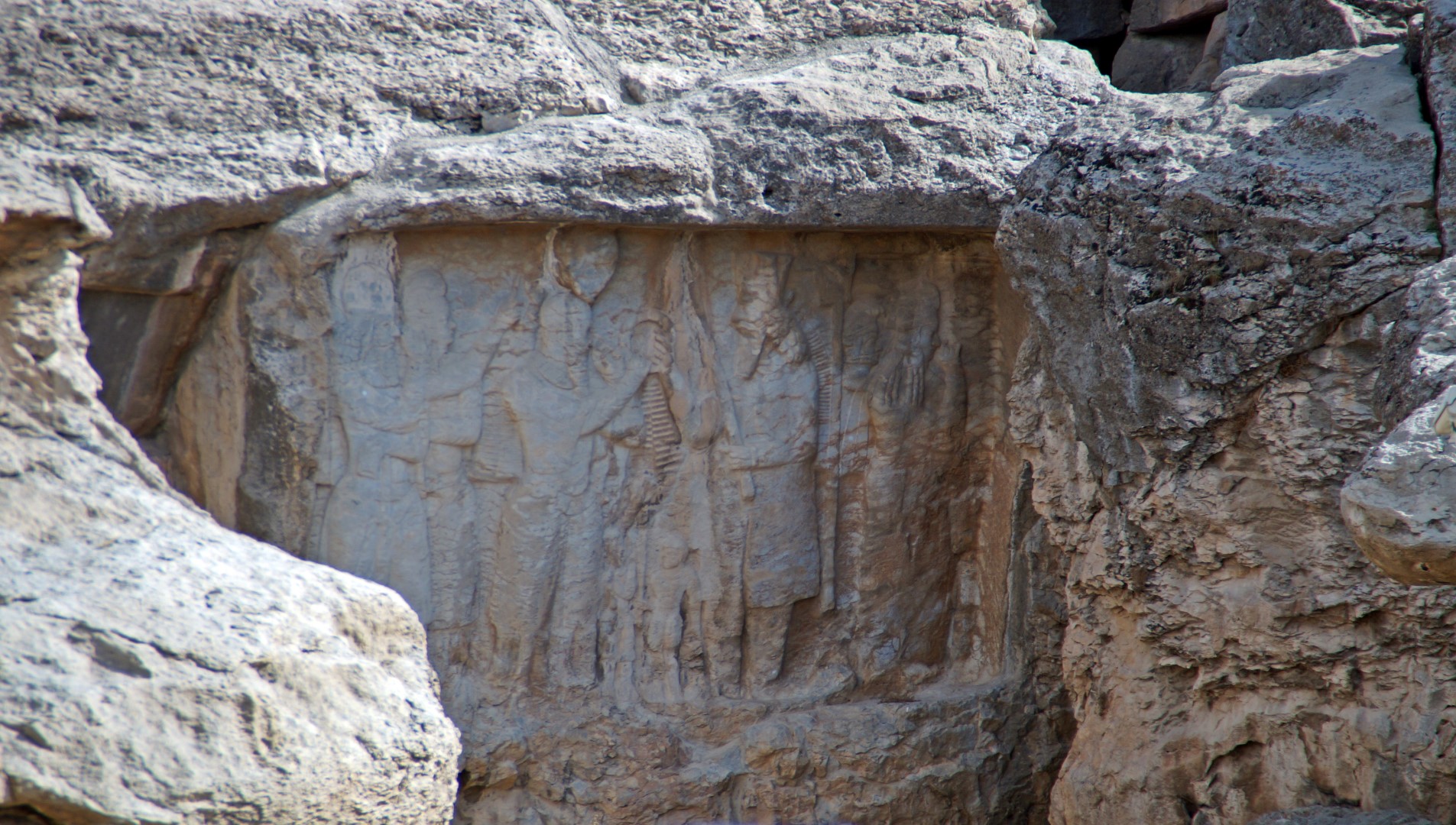
Persepolis, the ancient ceremonial capital of the Achaemenid Empire
Our last stop was Persepolis, one of the wonders of the ancient world, and one of the most awesome archaeological sites I’ve ever been to! Persepolis was built by Darius the Great, the third king of the Achaemenid Empire, and his son Xerxes in the beginning of the 6th century BC, and it was the ceremonial capital of the empire, back when the Persian Empire reached from Greece to India. The earliest remains at the site date back to 515 BC. In 1979, Persepolis was inscribed on the UNESCO World Heritage Sites list.
Just like Pasargadae, the site is huge, but there is so much more to see and explore at Persepolis. It’s a rare place that completely blew me away – I never expected it to be so big and so interesting!
We spent well over two hours there and explored all there was to explore. We even climbed up to two tombs in the mountains, where the view of Persepolis was absolutely mind-blowing.
Together with Kharanaq, Persepolis is the archaeological site in Iran that I’d recommend the most!
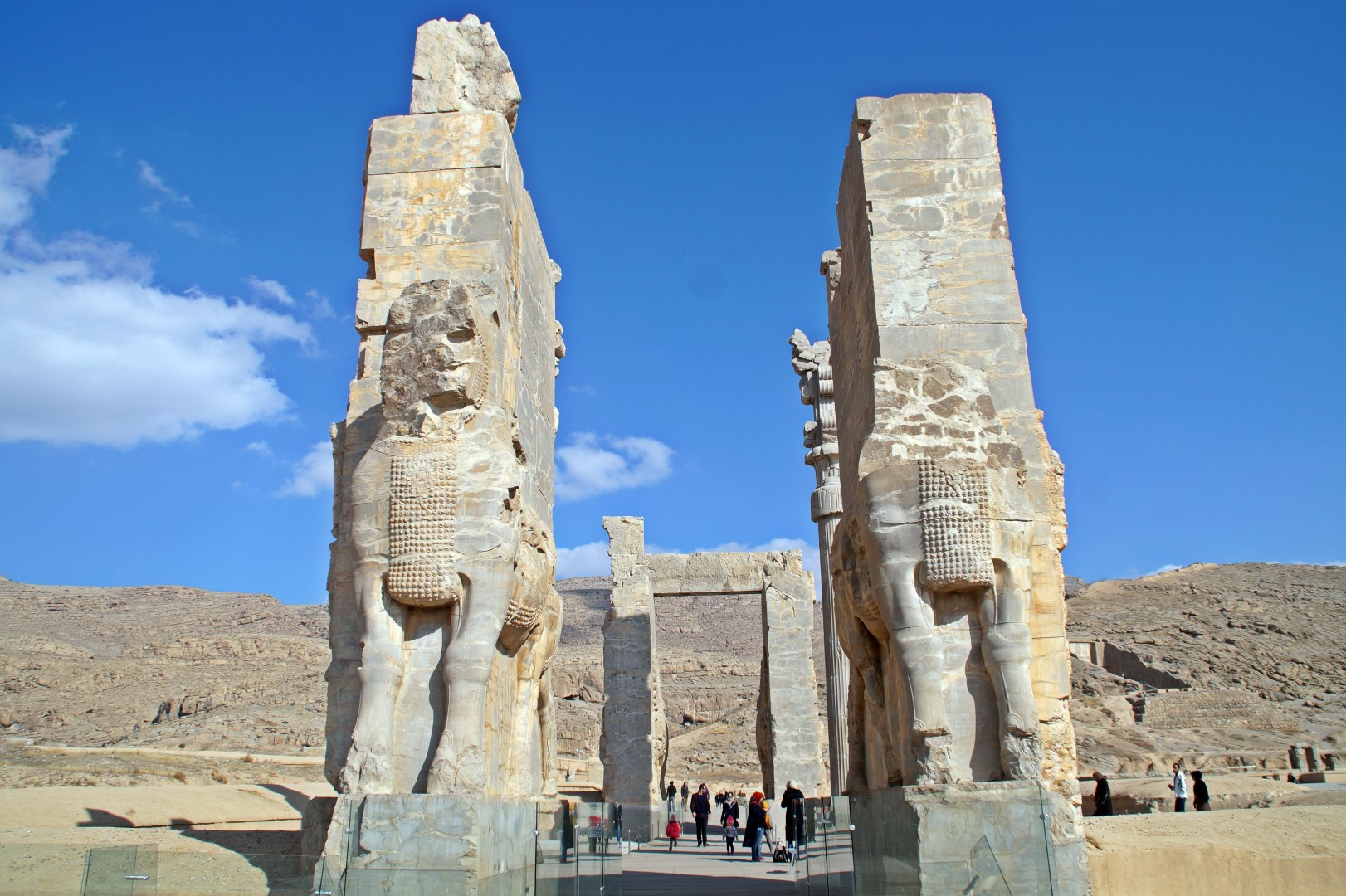
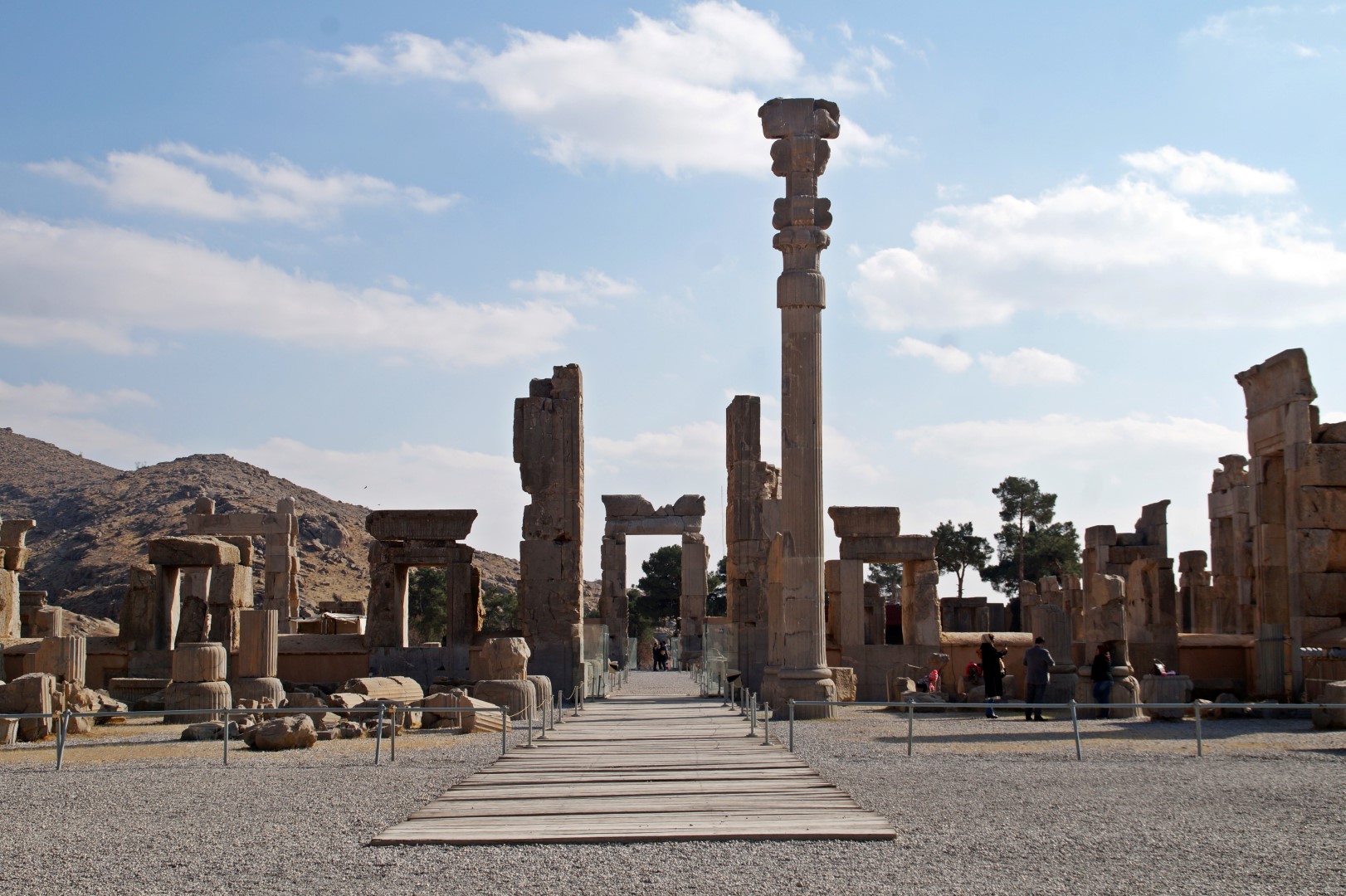
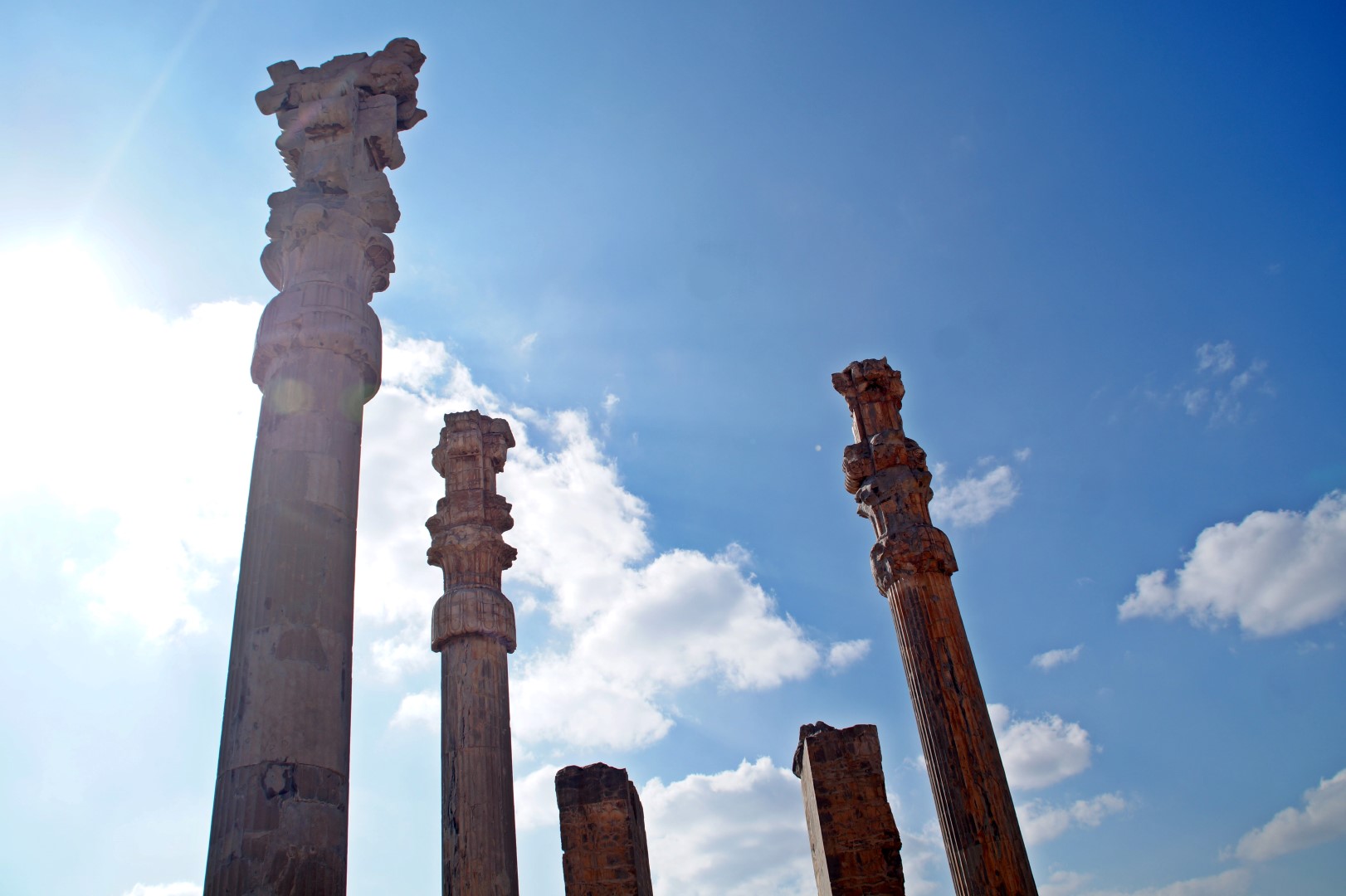
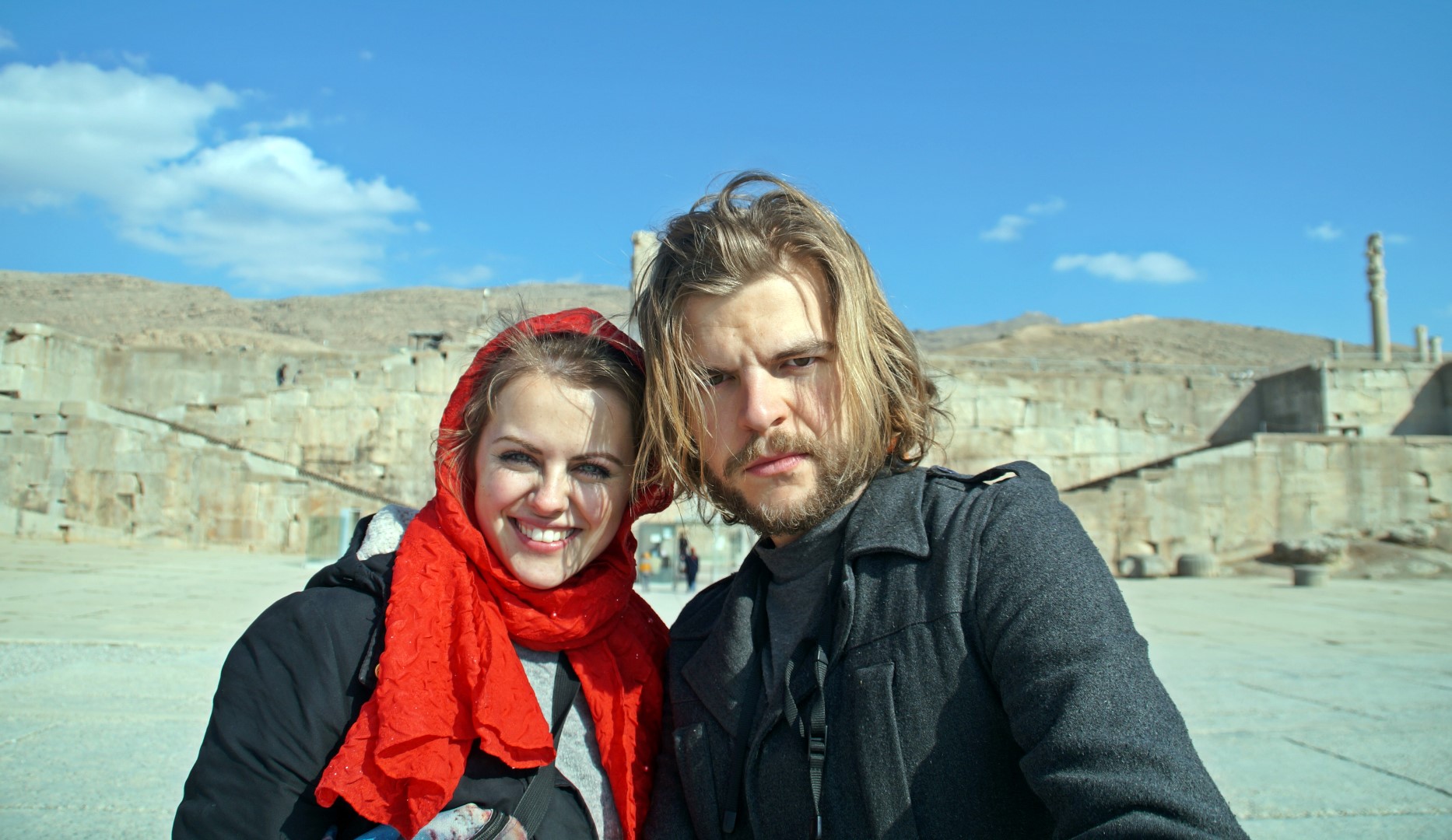

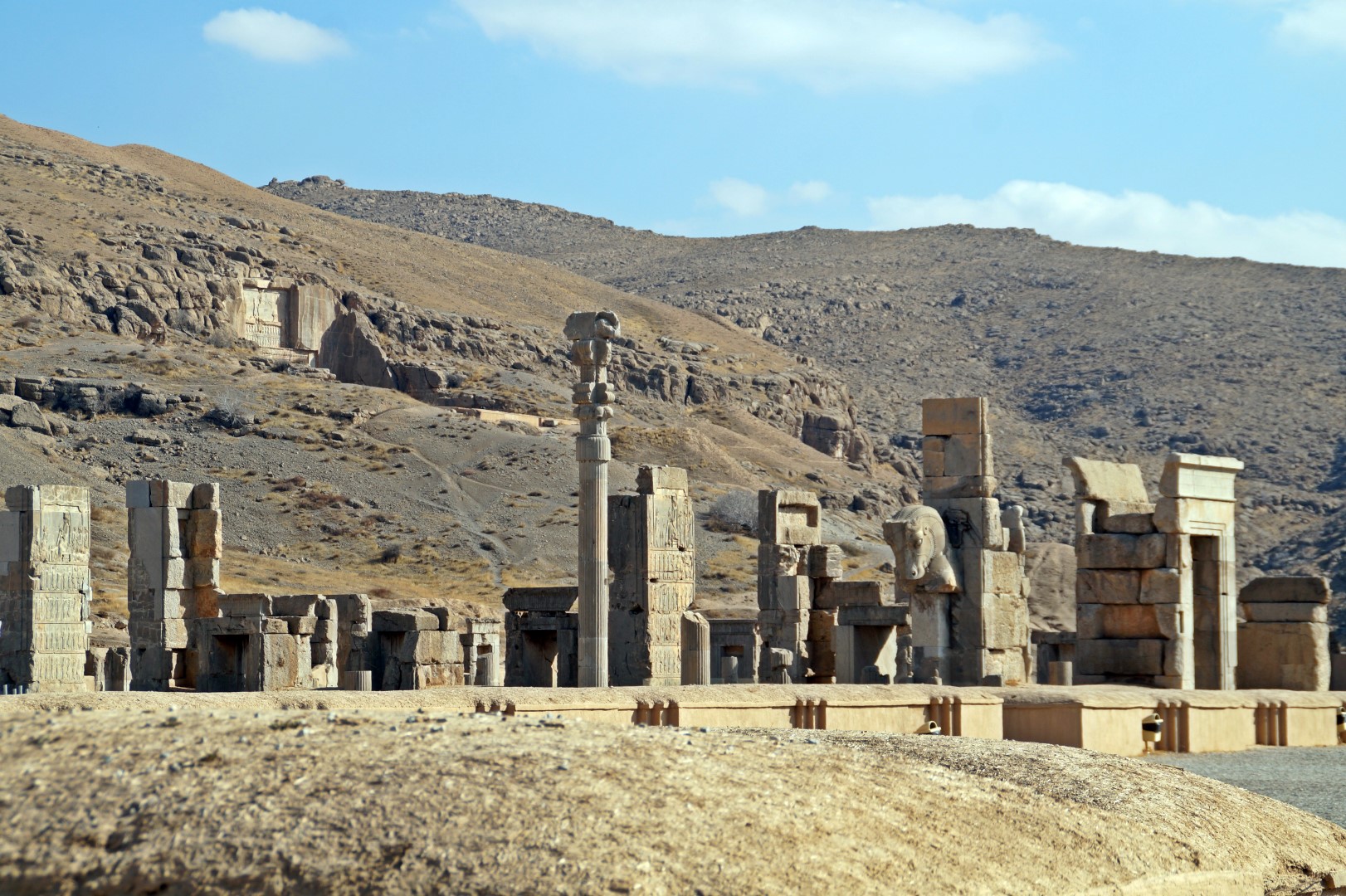
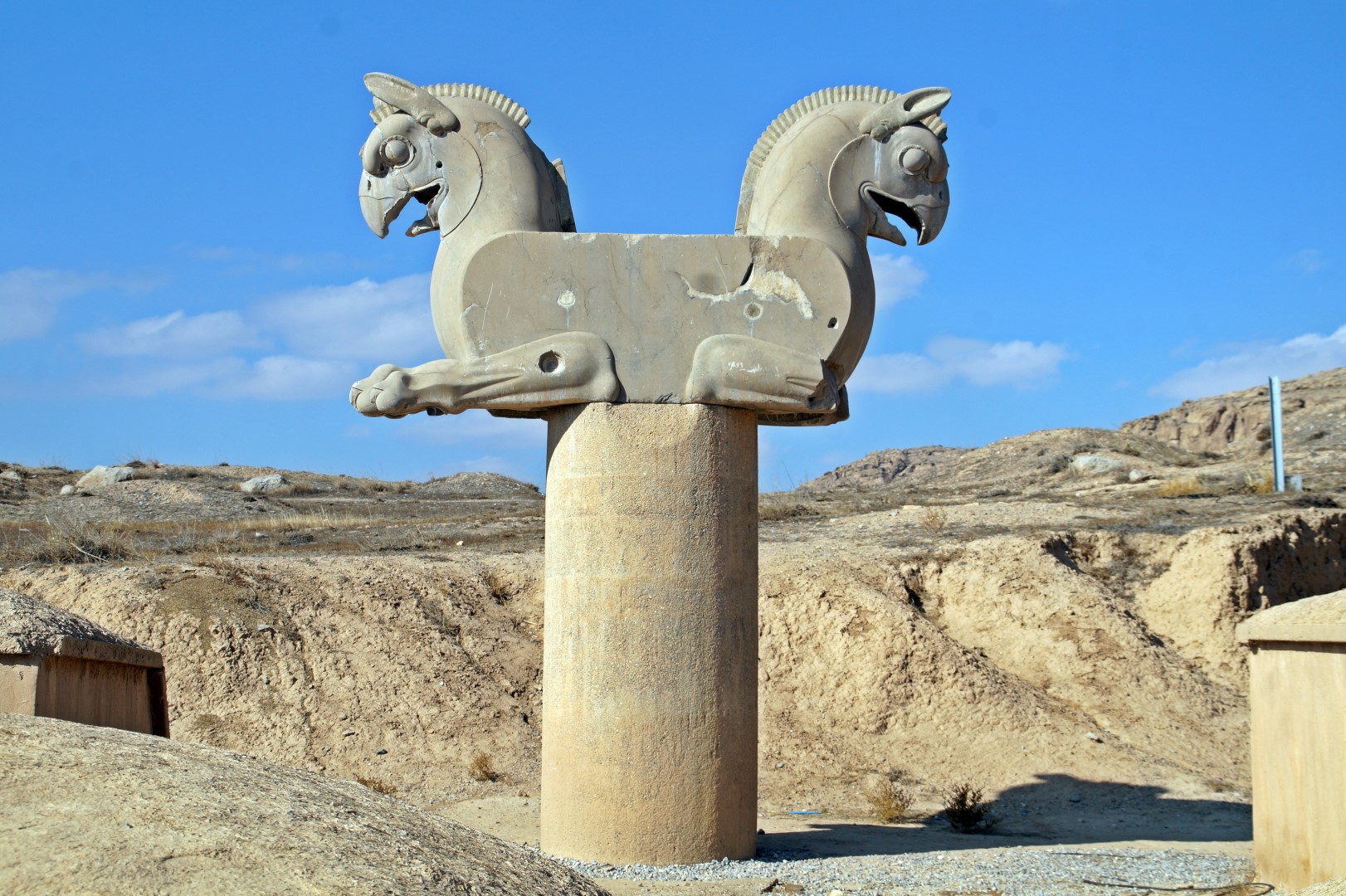
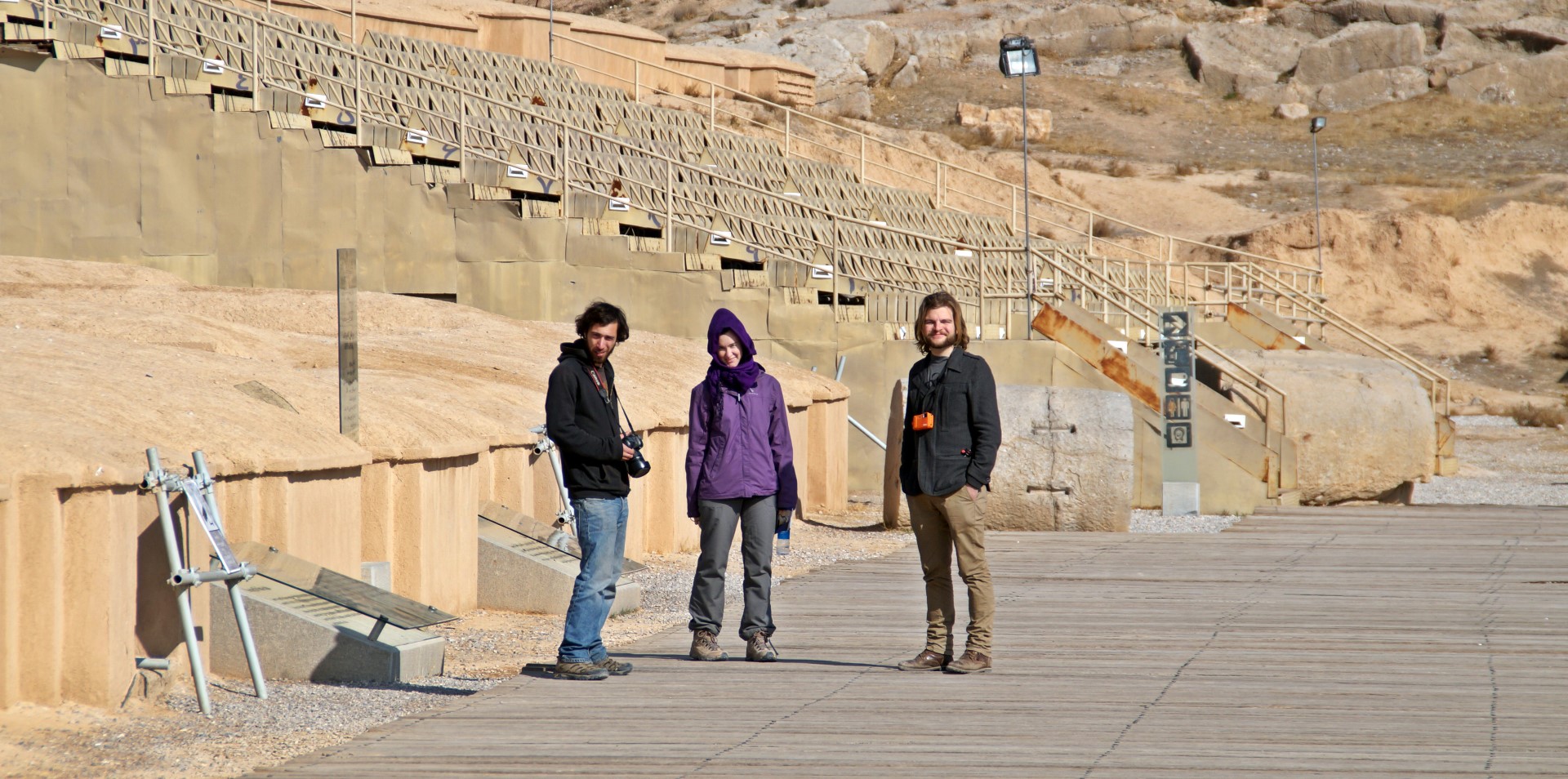
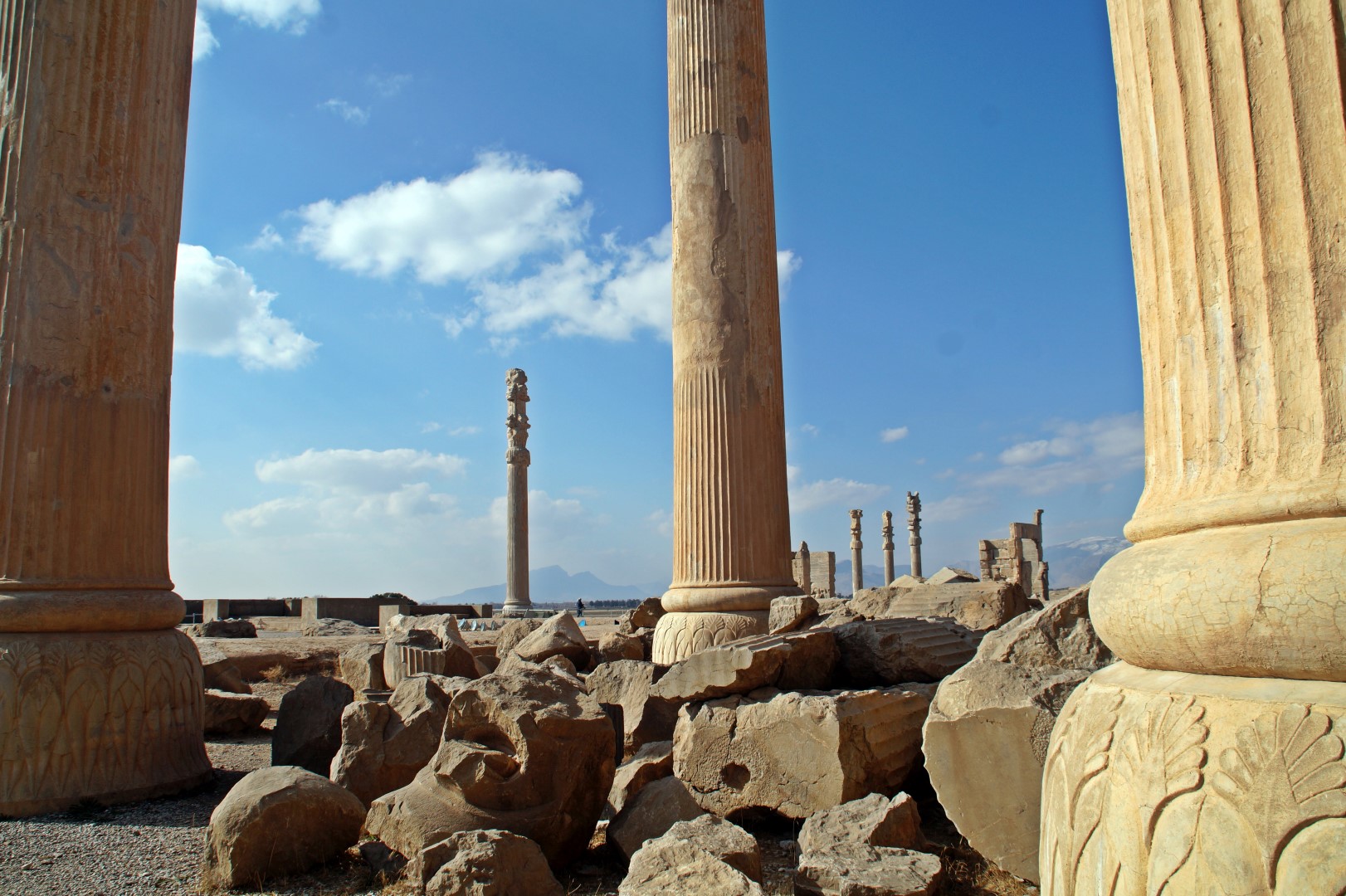
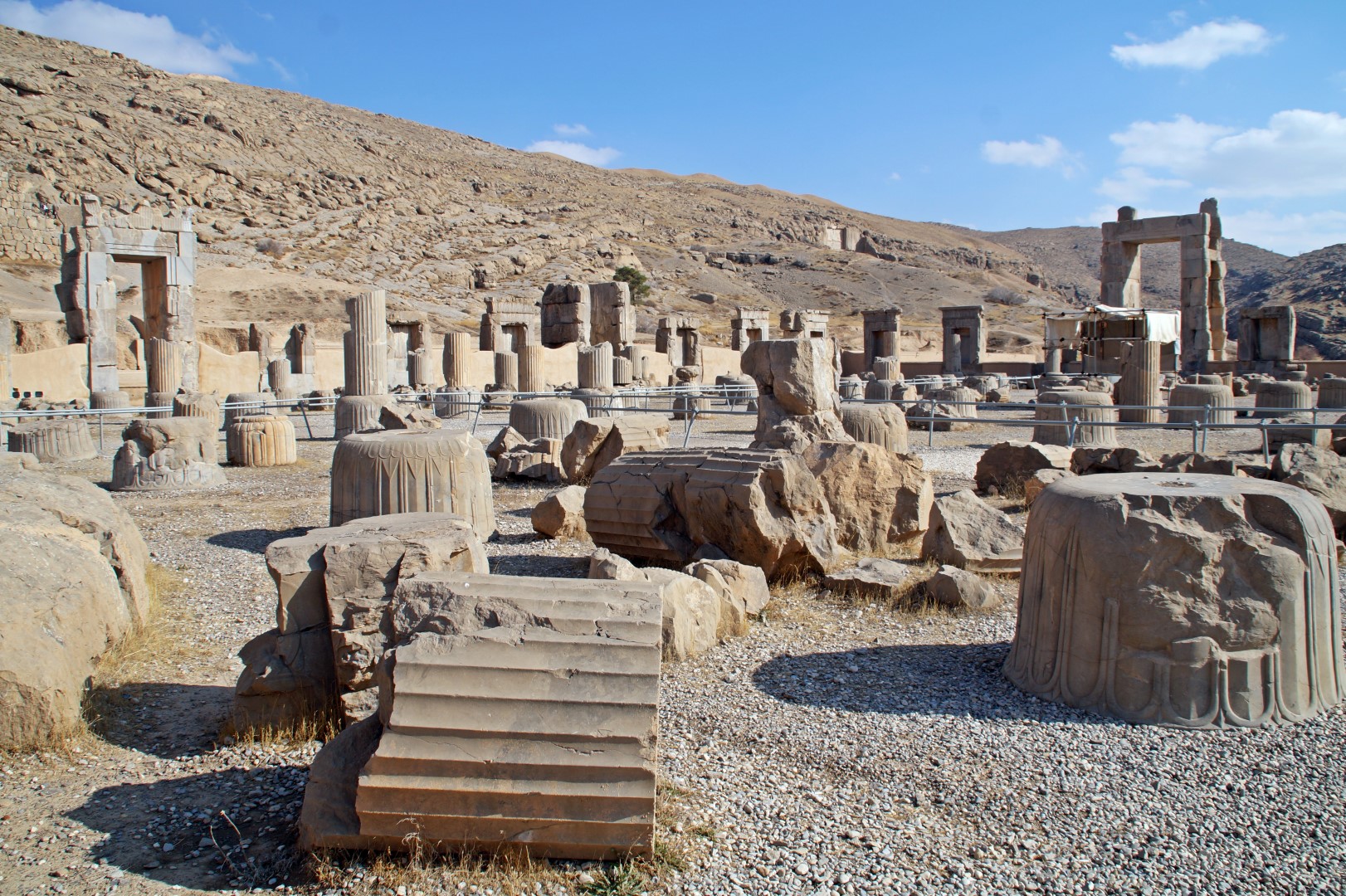
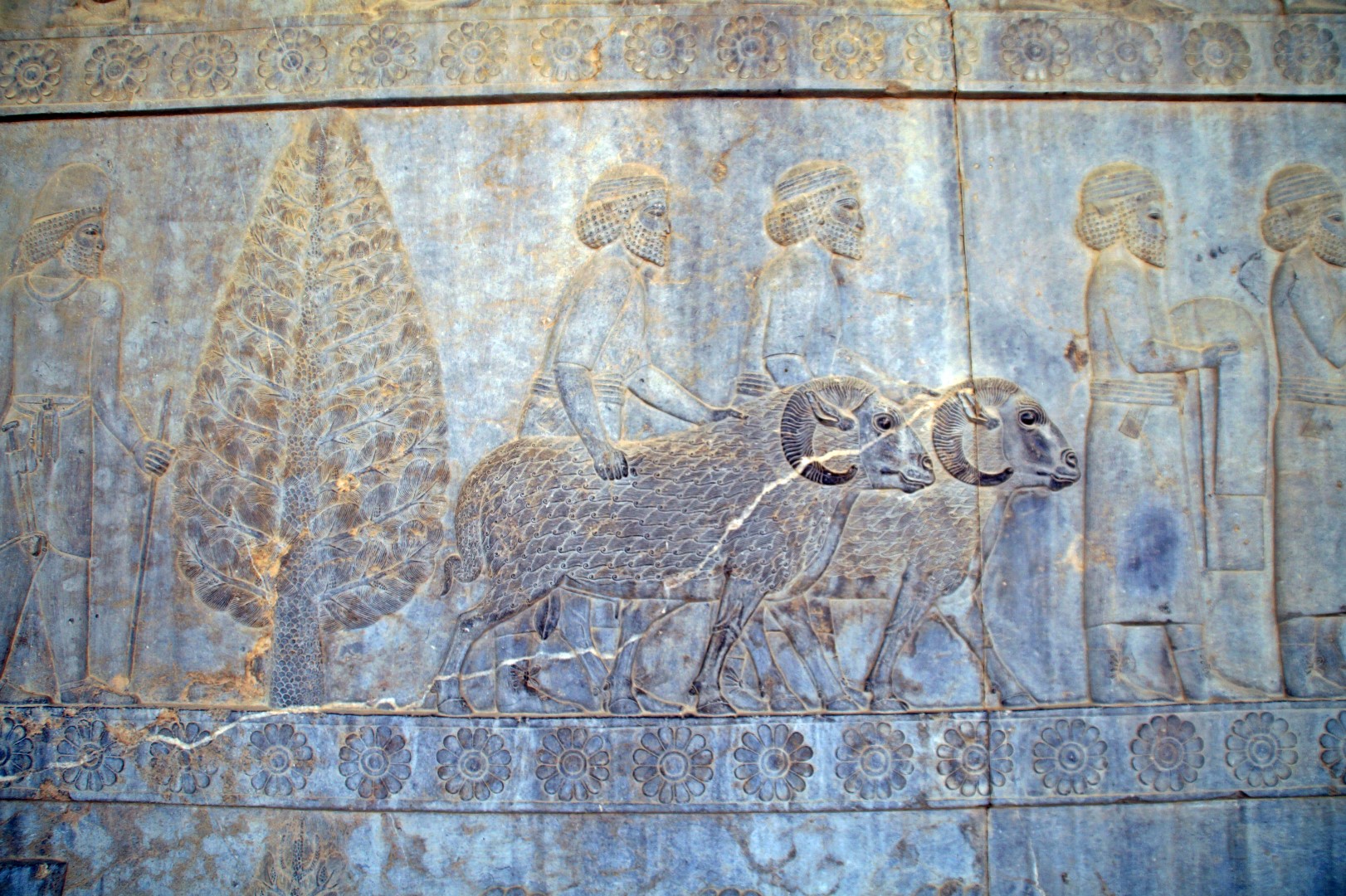
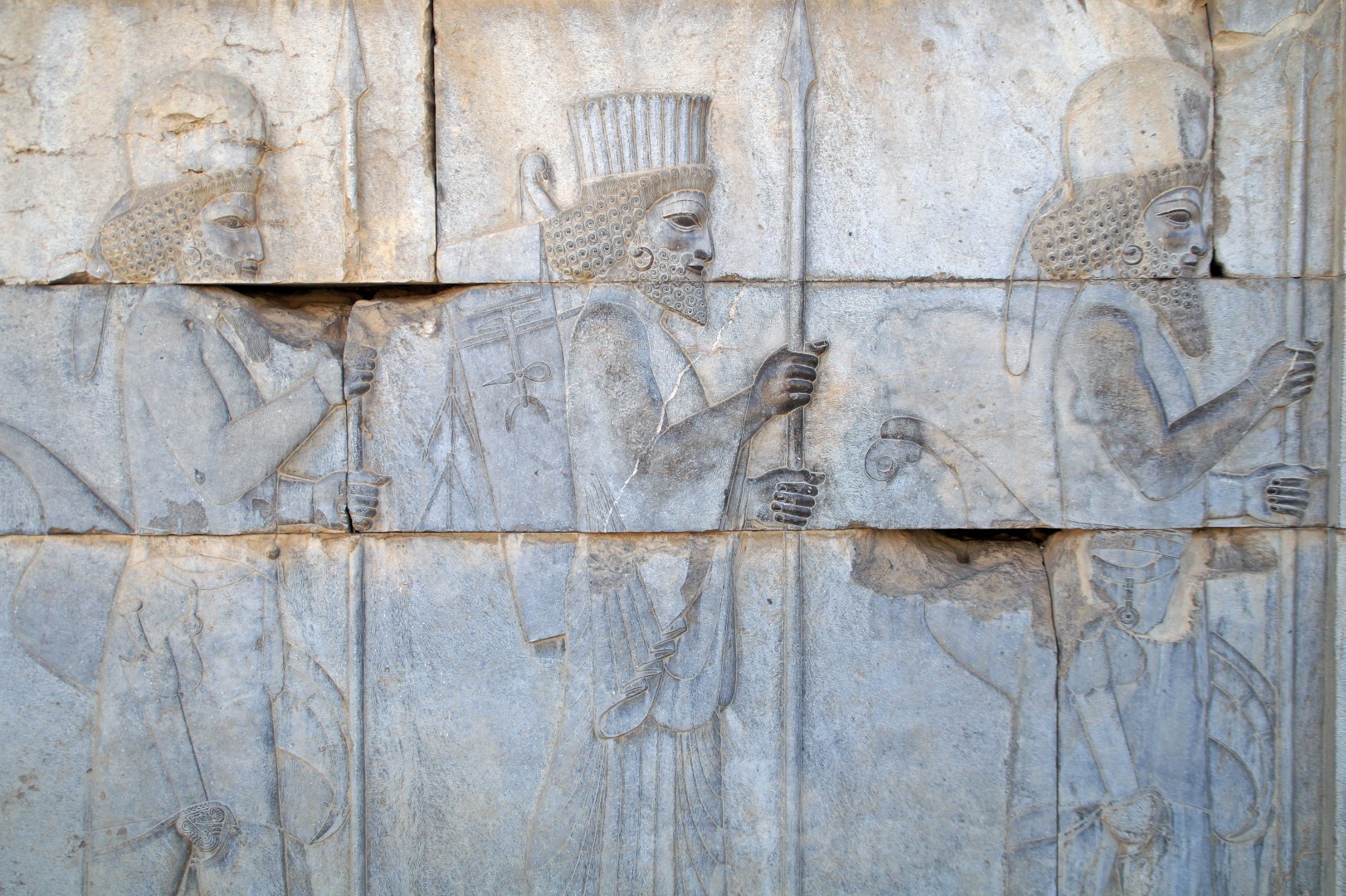
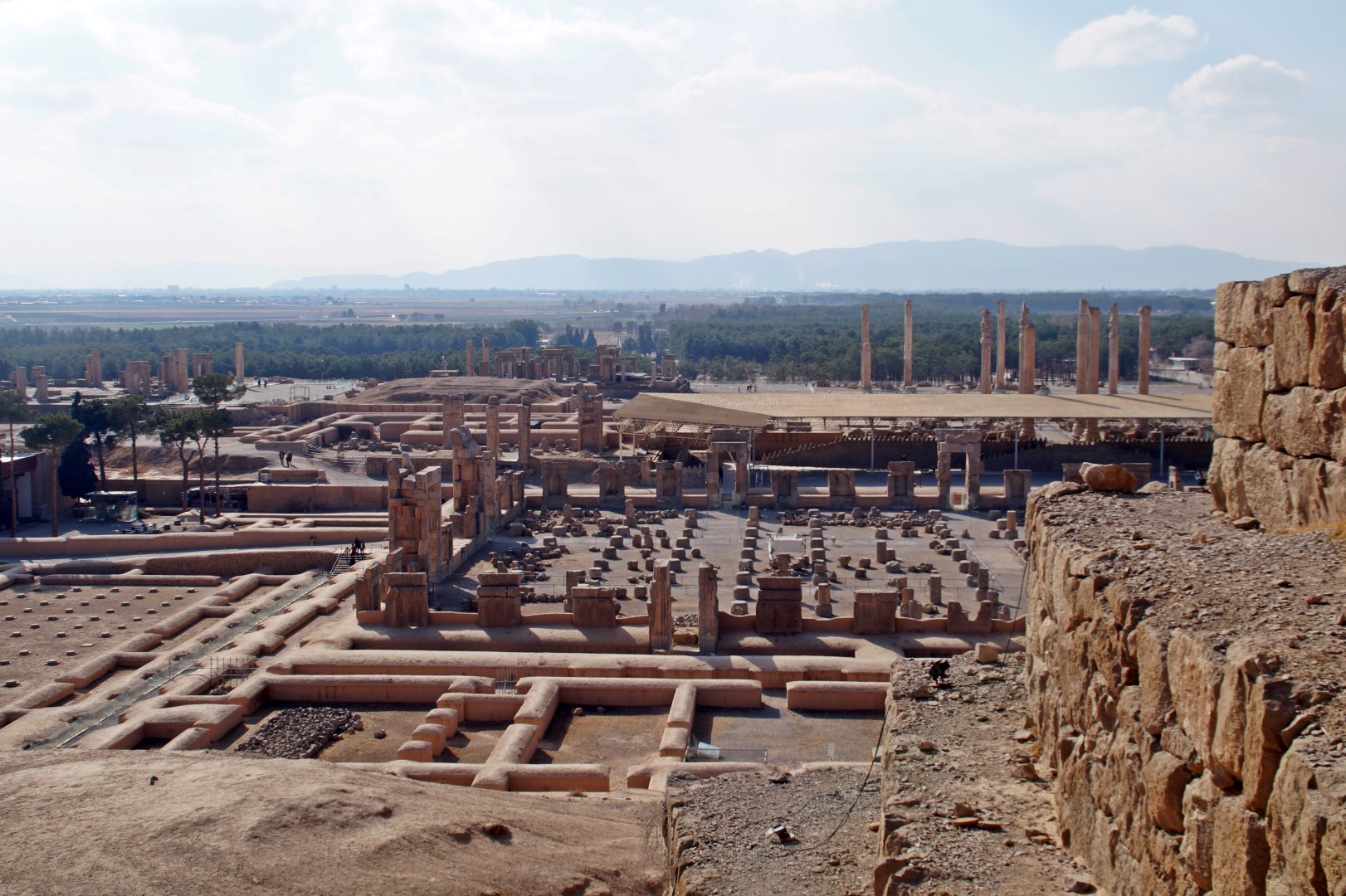
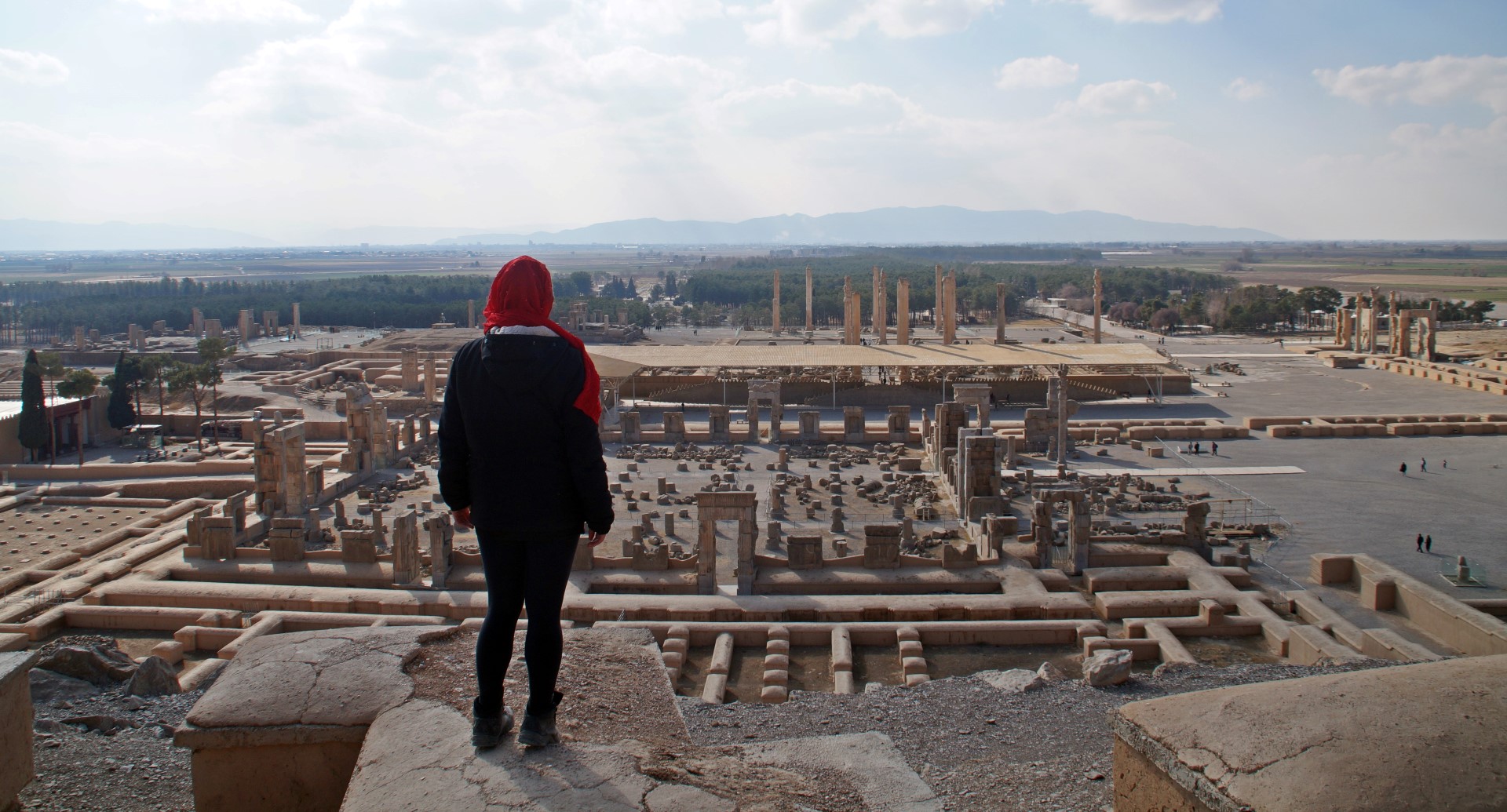
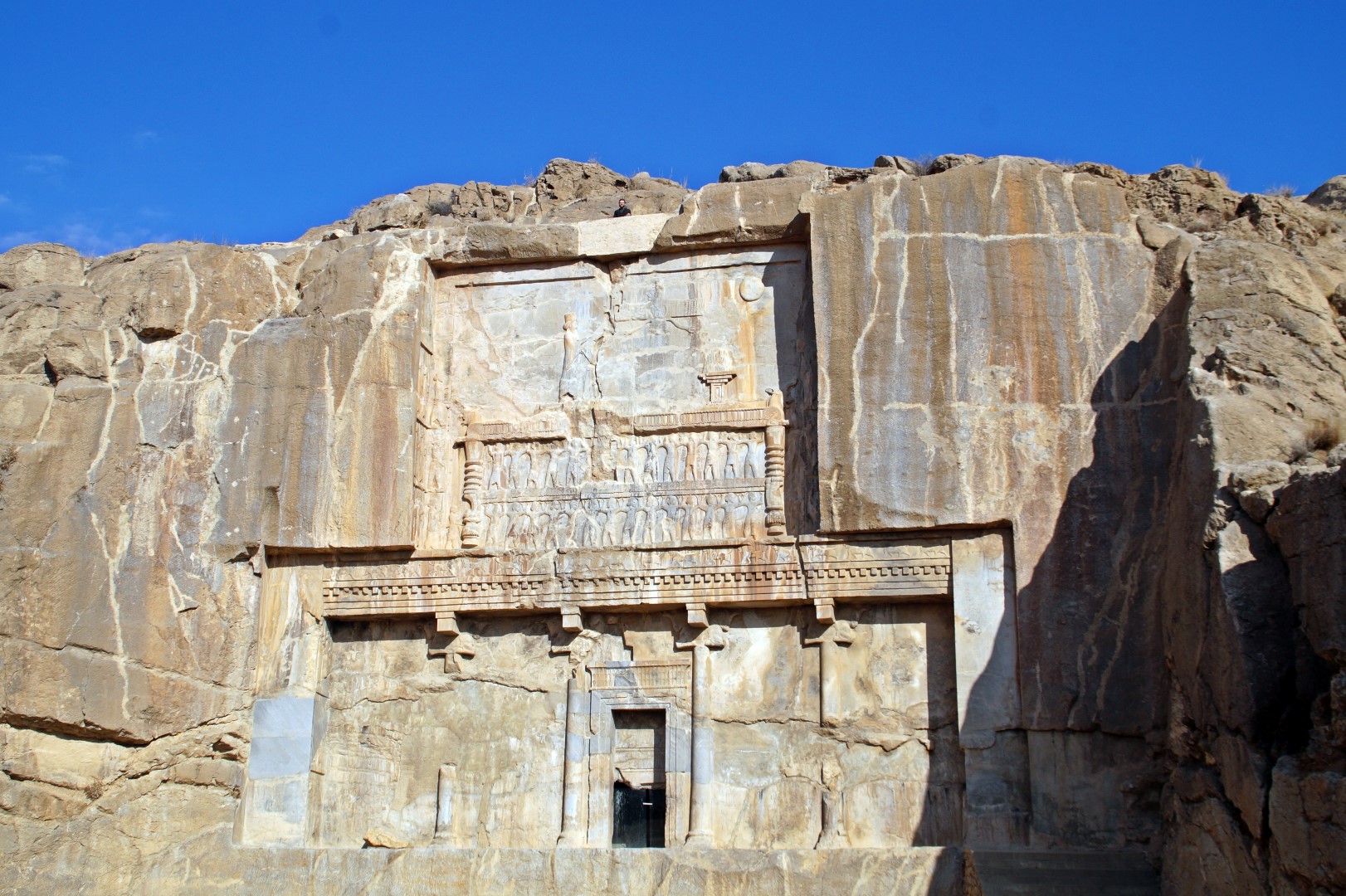
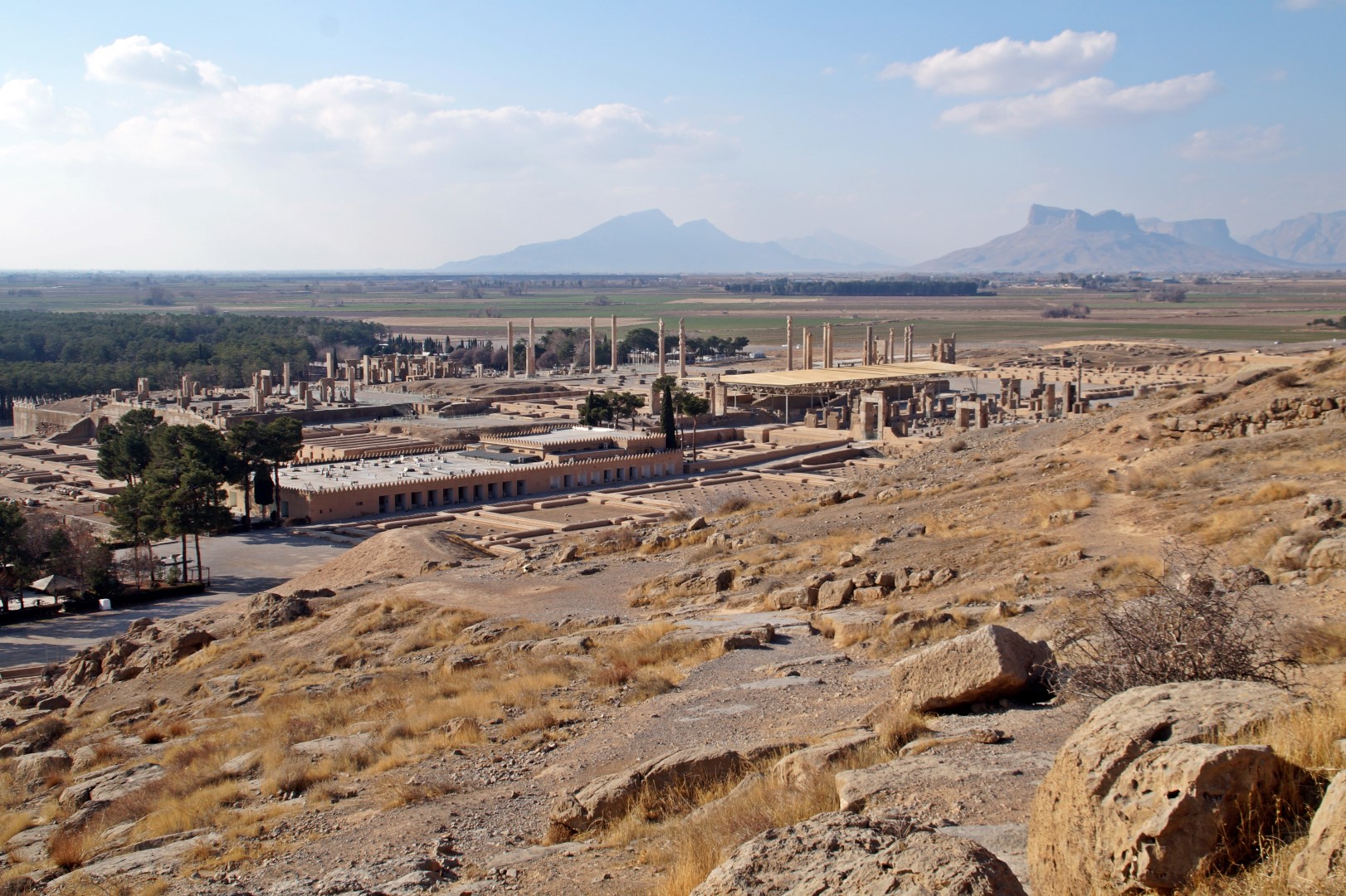
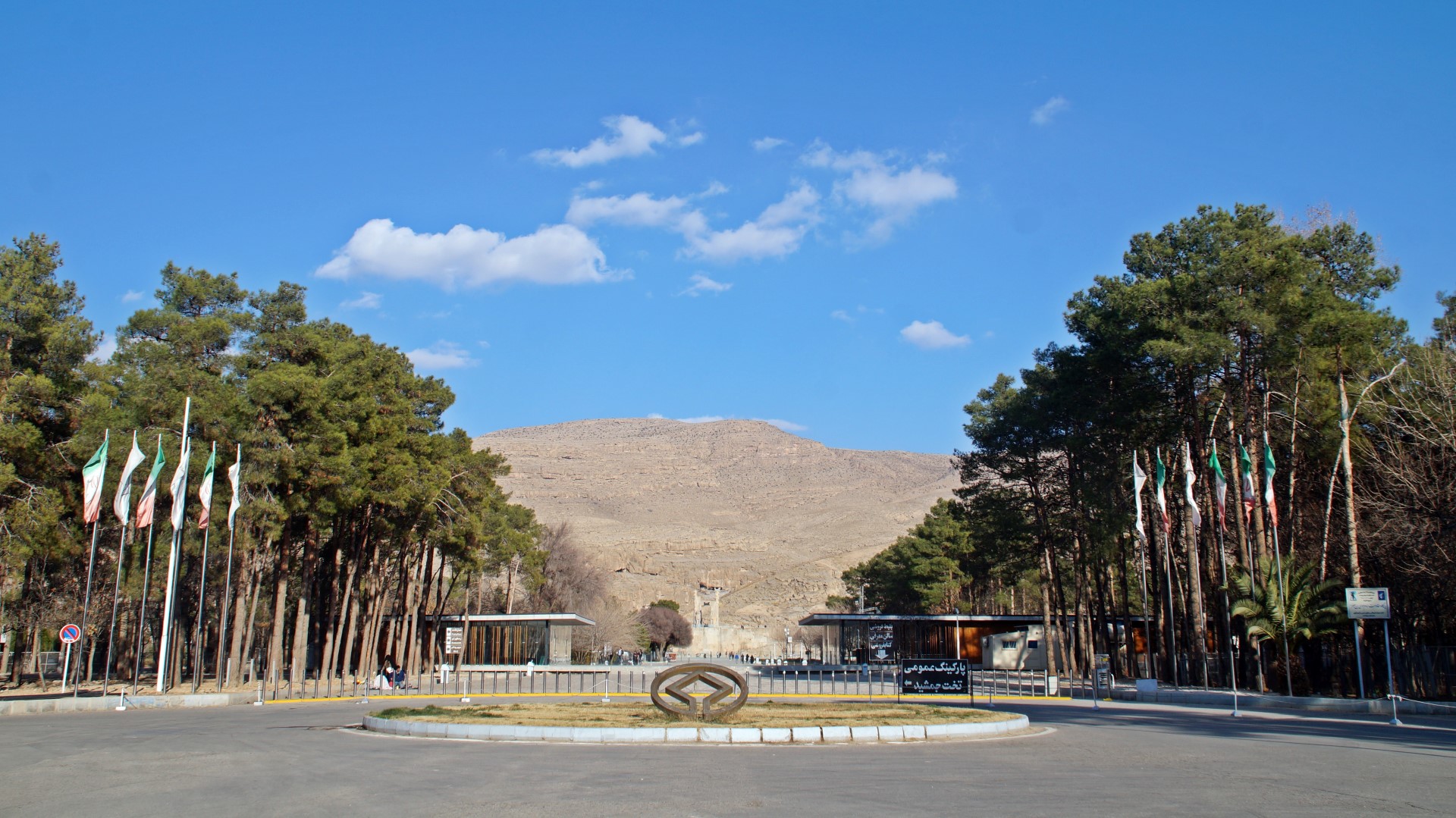
When we arrived back to Shiraz, after a drive that scared the life out of me, we had another issue with our driver. We had already agreed to pay him 1,900,000 rial (58½ USD), but he insisted on us paying another 100,000 rial (3 USD) to drive Itziar to her hostel, as Qail, Steve and I all got off at the same place, which has never been a problem with other taxi drivers, as the deal is always pick up and bring back! We had a loooong discussion with him, and I honestly got a bit angry with him, especially because I already felt like we were paying him overprice for the tour. Thankfully, we hadn’t handed over the money yet, so he couldn’t really do much else than what we wanted, so in the end, he made a fuss for nothing and Itziar got to her hotel safely without having to pay extra for just two kilometres.
All of the four places that we visited that day were interesting, but if you only have the chance to see one of these places, DEFINITELY choose Persepolis! You’ll miss out big time if you don’t go to Persepolis, and while the other sights are cool as well, especially Pasargadae, they don’t come anywhere near Persepolis!
How to visit Pasargadae, Necropolis and Persepolis
- We met a taxi driver called Ata in Shiraz, who offered us the tour for 1,900,000 rial (58½ USD). It should be possible to find cheaper options, but we split it between four people, so it was quite cheap. Unfortunately, Ata was a terrible driver, he was impatient when he thought we took too long at the sights, and he even had the nerve to ask for 100,000 rial (3 USD) extra to drive Itziar to the city center after dropping us off at our hotel. It was only an extra 2 km, plus usually a tour driver will always pick you up and drop you off where you want. After much persuasion, he finally did it with no extra pay. I wouldn’t recommend going with Ata, find someone nicer and cheaper instead!
- I can recommend going with a guy called Amir instead. I met him at the hotel in Shiraz after we had done the tour, which is unfortunate, as he was very nice! You can call him on +989178785416 or email him at amir.sahraaie@yahoo.com.
- Entrance fees: Pasargadae, Naqsh-e Rustam and Persepolis are all 200,000 rial (6 USD) each. Naqsh-e Rajab is 80,000 rial (2½ USD).
Leave a Comment
Pingback: My best travel moments of 2017 – Northtrotter on 22/02/2017
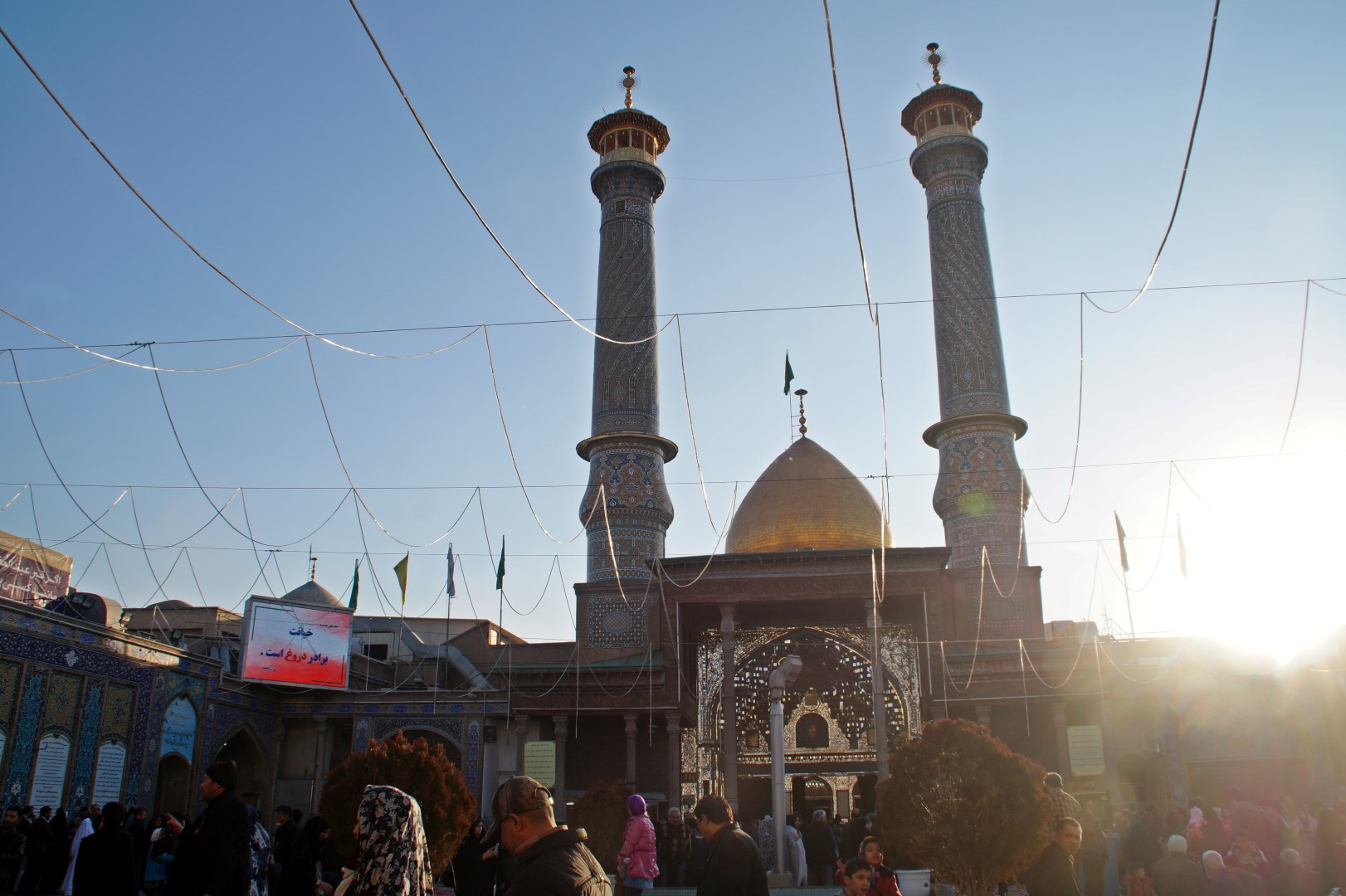
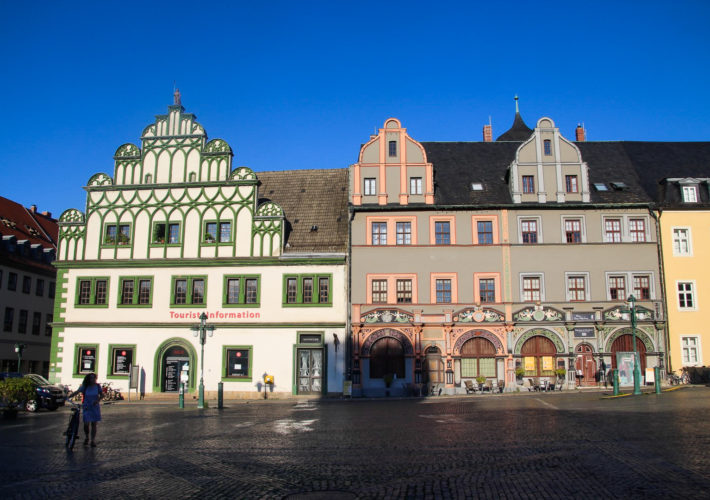


3 COMMENTS
Ann
7 years agoThat’s really a worth-to-visit place that hides so many beautiful secrets!
Melissa Cherry
7 years agoDefinitely! Hopefully you’ll get to experience it one day :-*